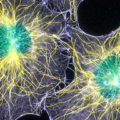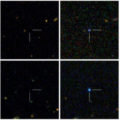
Using measures of T cell diversity, scientists from Erasmus MC University in the Netherlands have devised a test that estimates the age of crime suspects or missing persons from blood collected at the scene of a crime. Writing about their work in Current Biology, the researchers say the new profiling method could be put to immediate use by law enforcement agencies.
Existing methods for age estimation have limited use for crime scene investigation because they depend on the availability of teeth, bones, or other identifiable body parts. Researcher Manfred Kayser explained that other proposed genetic or biochemical methods to estimate age from blood samples have suffered from low accuracy and technical problems.
“With our test assay, we quantify the amount of sjTRECs in the total DNA extracted from a small blood sample and use a reference gene not affected by age to compensate for the total amount of DNA in the sample,” Kayser explained.
The approach allows accurate estimation of age, give or take nine years, the researchers report, suggesting that it would be highly accurate in placing unknown persons into generational categories spanning about 20 years.
Kayser said that the test currently has the highest accuracy of any test designed to estimate a phenotypic human trait from DNA information. Notably, its prediction accuracies are comparable to or better than those recently demonstrated for predicting brown versus blue eye color from DNA.
The new test is likely a harbinger of what’s to come as researchers uncover new methodsdesigned to reconstruct the appearance of unknown persons from biological crime scene samples.
Related:
DNA surname profiling mooted in UK
Hair-strands record travels
Spit-Swap Forces Changes To DNA Testing








Comments are closed.